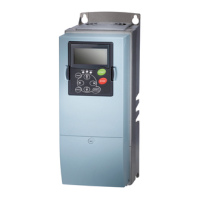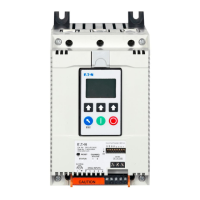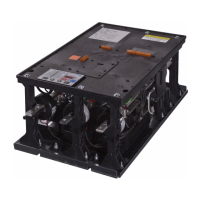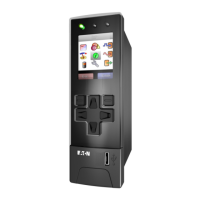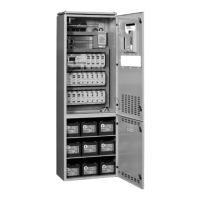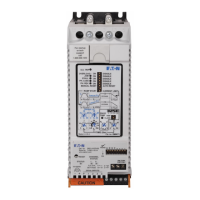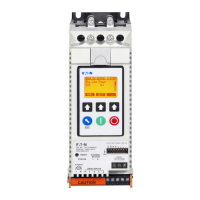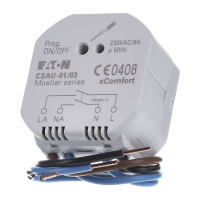Page 32 (60) Motor Pump Enhanced Protection Application SV9000
6.2.4 Group 5, Prohibit Frequency Parameters
5.1 Prohibit frequency range 1 low limit
5.2 Prohibit frequency range 1 high limit
5.3 Prohibit frequency range 2 low limit
5.4 Prohibit frequency range 2 high limit
5.5 Prohibit frequency range 3 low limit
5.6 Prohibit frequency range 3 high limit
In some systems it may be necessary to avoid certain frequencies because of mechanical
resonance problems. With these parameters it is possible to set limits for three "skip
frequency" regions. See figure 6.2-17.
f
out
(Hz)
Frequency
reference (Hz)
Par. 5.1 Par. 5.2
Par. 5.3 Par. 5.4
Par. 5.5 Par. 5.6
Figure 6.2-17: Example of Prohibit Frequency Area Setting.
6.2.5 Group 6, Motor Control Parameters
6.1 Motor control mode
0 = Frequency control:The I/O terminal and panel references are frequency references
and the frequency converter controls the output frequency (output frequency
resolution = 0.01 Hz)
1 = Speed control:The I/O terminal and panel references are speed references and the
frequency converter controls the motor speed (regulation accuracy ± 0,5%).
6.2 Switching frequency
Motor noise can be minimized using a high switching frequency. Increasing the switching
frequency reduces the capacity of the frequency converter unit.
Before changing the frequency from the factory default 10 kHz (3.6 kHz from 40 hp
upwards), check the allowed capacity from the curve in the figure 5.2-3 of chapter 5.2 of
the User's Manual.
6.3 Field weakening point
6.4 Voltage at field weakening point
The field weakening point is the output frequency at which the output voltage reaches the
set maximum value (par. 6.4). Above that frequency the output voltage remains at the set
maximum value. Below that frequency the output voltage depends on the setting of the
V/Hz curve parameters 1.8, 1.9, 6.5, 6.6 and 6.7. See figure 6.2-18.

